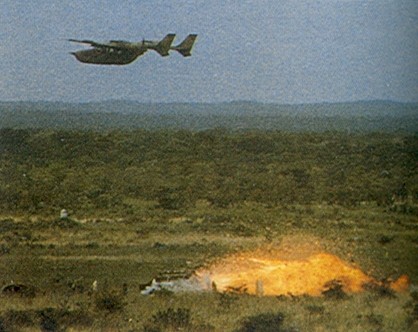Here are the predecessor
(the O-1, LINK), the successor
(the OV-10, LINK) and the current replacement
(the OA-10 CLINK) for that O-2 / 337.
Just as point of interest, that current jobby, serving in Afghanistan, is almost as maneuverable down low as the two Cessnas thanks to those huge wings and the big fans, is capable of carrying a far larger and more diverse weapon load and has all the mod cons including a titanium armor tub for the pilot and about twice the speed and range or endurance...

The Troops love it -- I mean the grunts, the infantry. It is the favored CAS bird, followed by the Apache, followed by the Harriers of the UK and USMC, then by all others.











 18 gal Frantan strike
18 gal Frantan strike



 ). It will stay that way unless we get in a big war, then it'll go away totally until peace returns...
). It will stay that way unless we get in a big war, then it'll go away totally until peace returns... 

Bookmarks